500 Glucose Level: Understanding Diabetic Coma Symptoms and Causes
What are the symptoms of a diabetic coma. How can high or low blood sugar lead to a diabetic coma. What are the risk factors for developing a diabetic coma. How can diabetic coma be prevented.
What is a Diabetic Coma?
A diabetic coma is a severe, life-threatening condition that can occur in people with diabetes. It is characterized by a state of unconsciousness where the affected individual is alive but unable to respond to external stimuli. This medical emergency can result from extreme fluctuations in blood sugar levels, either dangerously high (hyperglycemia) or critically low (hypoglycemia).
The gravity of a diabetic coma cannot be overstated. If left untreated, it can lead to fatal consequences. However, with proper diabetes management and awareness of warning signs, the risk of experiencing a diabetic coma can be significantly reduced.
Recognizing the Symptoms of High and Low Blood Sugar
Before a diabetic coma occurs, individuals typically experience symptoms related to either high or low blood sugar levels. Recognizing these early warning signs is crucial for preventing the progression to a coma.

Symptoms of High Blood Sugar (Hyperglycemia)
- Increased thirst and frequent urination
- Blurred vision
- Fatigue or weakness
- Headache
- Nausea and vomiting
- Shortness of breath
- Abdominal pain
- Fruity breath odor
- Extremely dry mouth
Symptoms of Low Blood Sugar (Hypoglycemia)
- Shakiness and anxiety
- Tiredness or drowsiness
- Weakness and sweating
- Intense hunger
- Tingling sensation on the skin
- Dizziness or lightheadedness
- Difficulty speaking
- Blurry vision
- Confusion
- Loss of consciousness (in severe cases)
It’s important to note that some individuals with long-standing diabetes may develop a condition called hypoglycemia unawareness. This means they may not experience the typical warning symptoms of low blood sugar, putting them at higher risk for severe hypoglycemic events.
Understanding the Causes of Diabetic Coma
A diabetic coma can result from three main conditions, all related to blood sugar imbalances:
1. Diabetic Ketoacidosis (DKA)
DKA occurs when the body, starved for glucose, begins breaking down fat for energy. This process produces toxic acids called ketones. When ketones accumulate in the blood alongside high blood sugar levels, it can lead to DKA and potentially a diabetic coma.
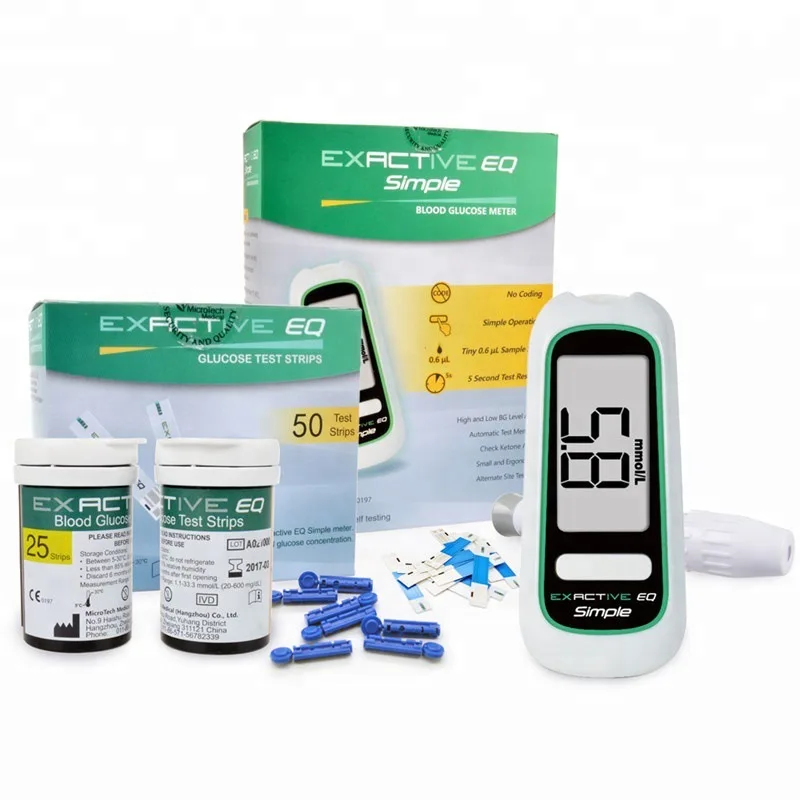
While DKA is most common in people with type 1 diabetes, it can also affect those with type 2 or gestational diabetes. The condition develops when there’s insufficient insulin to allow glucose to enter cells for energy, forcing the body to resort to fat breakdown.
2. Diabetic Hyperosmolar Syndrome (HHS)
HHS typically occurs when blood sugar levels exceed 600 mg/dL (33.3 mmol/L). At such high levels, excess sugar is excreted in the urine, triggering a process that draws large amounts of fluid from the body. If left untreated, this can result in severe dehydration and potentially lead to a diabetic coma.
3. Severe Hypoglycemia
When blood sugar levels drop too low, it can deprive the brain of the glucose it needs to function properly. In severe cases, this can cause loss of consciousness and, if prolonged, lead to a diabetic coma. Hypoglycemia can result from excessive insulin, insufficient food intake, vigorous exercise, or alcohol consumption.
Identifying Risk Factors for Diabetic Coma
While anyone with diabetes is at risk of experiencing a diabetic coma, certain factors can increase this risk:

- Insulin delivery problems: For those using insulin pumps, malfunctions or catheter issues can lead to insulin deficiency and increase the risk of DKA.
- Illness, trauma, or surgery: These stressors can cause significant fluctuations in blood sugar levels.
- Poor diabetes management: Inconsistent monitoring of blood sugar or improper medication use can increase the risk of complications, including diabetic coma.
- Intentional skipping of meals or insulin: This dangerous practice, sometimes associated with eating disorders, can severely destabilize blood sugar levels.
- Alcohol consumption: Alcohol can have unpredictable effects on blood sugar and may mask symptoms of hypoglycemia.
- Illegal drug use: Substances like cocaine can interfere with blood sugar regulation.
The Importance of Prompt Medical Attention
Is it crucial to seek immediate medical care when experiencing severe symptoms of blood sugar imbalance? Absolutely. If you or someone you know with diabetes shows signs of extreme high or low blood sugar and appears to be losing consciousness, it’s imperative to call emergency services immediately.

For individuals with diabetes who have passed out, inform emergency responders about their diabetes diagnosis. This information can be critical in ensuring appropriate and timely treatment.
Preventing Diabetic Coma: Effective Strategies
While the prospect of a diabetic coma can be frightening, there are several strategies that can significantly reduce the risk:
- Adhere to your diabetes management plan: Consistently follow the treatment regimen prescribed by your healthcare provider.
- Monitor blood sugar levels regularly: Frequent checking allows for early detection of dangerous fluctuations.
- Be prepared for emergencies: Always carry glucose tablets or other fast-acting carbohydrates to treat low blood sugar quickly.
- Wear a medical alert bracelet: This can inform others of your diabetes status in case of an emergency.
- Educate family and friends: Ensure that those close to you know how to recognize and respond to severe blood sugar imbalances.
- Stay hydrated: Proper hydration is crucial, especially in preventing HHS.
- Manage stress: Stress can affect blood sugar levels, so developing effective coping mechanisms is important.
Long-Term Management of Diabetes to Reduce Coma Risk
How can individuals with diabetes minimize their long-term risk of experiencing a diabetic coma? The key lies in comprehensive diabetes management:

Regular Medical Check-ups
Scheduled visits with your healthcare provider allow for ongoing assessment of your diabetes management and timely adjustments to your treatment plan.
Continuous Glucose Monitoring (CGM)
For some individuals, especially those at high risk of severe blood sugar fluctuations, CGM devices can provide real-time blood sugar data and early warnings of dangerous trends.
Balanced Diet and Exercise
A diet tailored to your specific needs, combined with regular physical activity, can help maintain stable blood sugar levels. Always consult with your healthcare provider before making significant changes to your diet or exercise routine.
Medication Adherence
Consistently taking prescribed medications, including insulin if required, is crucial for maintaining blood sugar control.
Stress Management
Chronic stress can impact blood sugar levels. Incorporating stress-reduction techniques such as meditation, yoga, or counseling can be beneficial.
Alcohol Moderation
If you choose to drink alcohol, do so in moderation and always with food. Be aware of how alcohol affects your blood sugar levels.

Sick Day Management
Develop a plan with your healthcare provider for managing your diabetes during illnesses, which can significantly affect blood sugar levels.
The Role of Technology in Diabetes Management
How is technology advancing the field of diabetes care and potentially reducing the risk of diabetic coma? Recent innovations have introduced several tools that can aid in more effective diabetes management:
Smart Insulin Pumps
Advanced insulin pumps can now adjust insulin delivery based on real-time glucose readings, helping to prevent dangerous highs and lows.
Smartphone Apps
Various apps can help track blood sugar levels, medication doses, diet, and exercise, providing a comprehensive overview of diabetes management.
Artificial Pancreas Systems
These closed-loop systems combine continuous glucose monitoring with automated insulin delivery, mimicking the function of a healthy pancreas.
Telemedicine
Remote consultations with healthcare providers can allow for more frequent check-ins and timely adjustments to diabetes management plans.

While these technological advancements offer promising tools for diabetes management, they should be used in conjunction with, not as a replacement for, comprehensive medical care and personal vigilance.
Understanding the Impact of Comorbidities on Diabetic Coma Risk
How do other health conditions affect the risk of diabetic coma in individuals with diabetes? Several comorbidities can complicate diabetes management and potentially increase the risk of severe blood sugar imbalances:
Cardiovascular Disease
Heart conditions can affect blood flow and metabolism, potentially leading to unpredictable blood sugar fluctuations.
Kidney Disease
Impaired kidney function can affect how the body processes medications and regulates fluid balance, complicating diabetes management.
Thyroid Disorders
Thyroid hormones play a crucial role in metabolism and can significantly impact blood sugar control.
Obesity
Excess weight can increase insulin resistance, making blood sugar management more challenging.
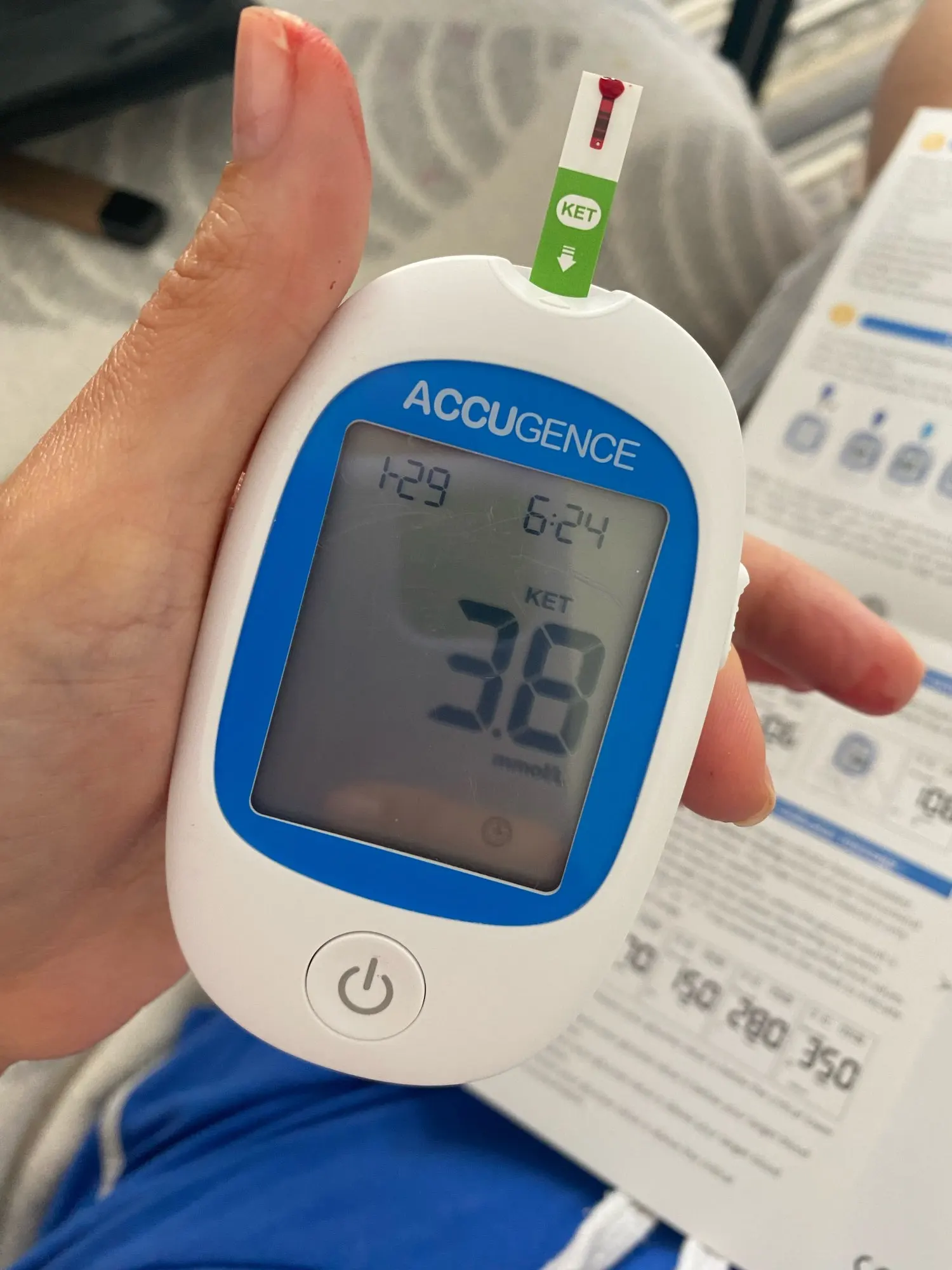
Depression and Anxiety
Mental health conditions can affect adherence to diabetes management routines and impact stress levels, both of which can influence blood sugar control.
For individuals with diabetes who also have these or other chronic health conditions, close collaboration with healthcare providers is essential to develop a comprehensive management plan that addresses all aspects of their health.
The Psychological Impact of Diabetic Coma Risk
How does the risk of diabetic coma affect the mental health of individuals living with diabetes? The constant vigilance required to manage diabetes and prevent severe complications like diabetic coma can take a significant psychological toll:
Anxiety and Fear
The fear of experiencing a diabetic coma or other severe complications can lead to heightened anxiety, especially in those who have had close calls or know others who have experienced such events.
Depression
The burden of managing a chronic condition like diabetes, coupled with the fear of complications, can contribute to depressive symptoms in some individuals.
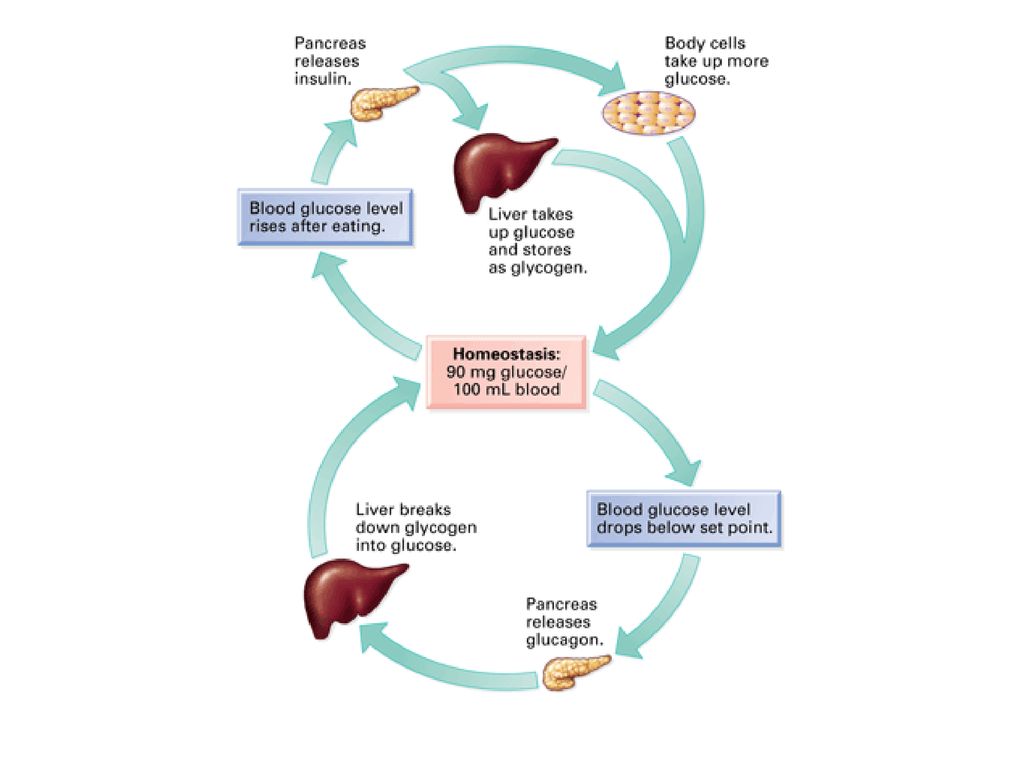
Diabetes Distress
This term refers to the emotional burden of living with diabetes, including feelings of overwhelm, frustration, and burnout related to the constant demands of diabetes management.
Social Isolation
Some individuals may withdraw from social activities due to concerns about managing their diabetes in public or fear of experiencing a severe blood sugar event.
Addressing these psychological aspects is crucial for overall well-being and effective diabetes management. Support groups, counseling, and open communication with healthcare providers can all play important roles in managing the emotional aspects of living with diabetes.
Educating the Public: Recognizing and Responding to Diabetic Emergencies
Why is public awareness about diabetic emergencies crucial? Increased understanding can lead to faster recognition and response to potentially life-threatening situations, including diabetic coma.
Signs to Watch For
Educate the general public about the signs of severe hyper- and hypoglycemia, such as confusion, loss of consciousness, or seizures in individuals known to have diabetes.
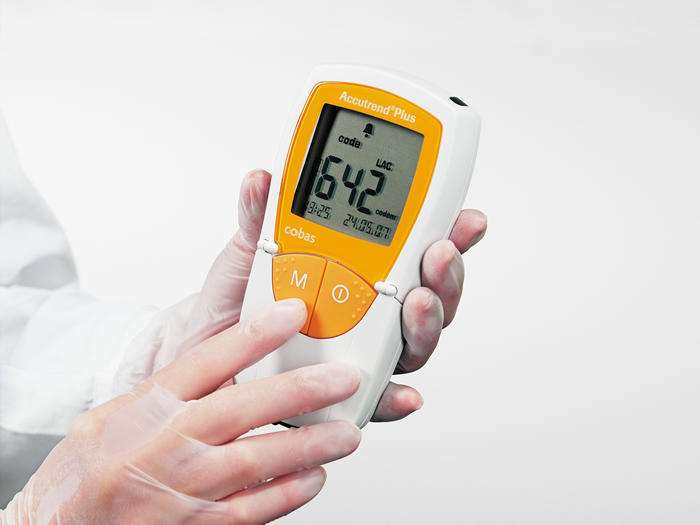
Emergency Response
Teach basic first aid for diabetic emergencies, including how to safely administer glucose to someone experiencing hypoglycemia (if conscious and able to swallow) and when to call for emergency medical services.
Workplace and School Policies
Encourage the development of protocols for managing diabetic emergencies in various settings, ensuring that staff are trained to recognize and respond appropriately.
Community Education Programs
Support initiatives that provide education about diabetes management and emergency response in community settings, such as schools, workplaces, and community centers.
By fostering a more informed and prepared community, we can create a safer environment for individuals living with diabetes and potentially prevent severe outcomes like diabetic coma.
Diabetic coma – Symptoms & causes
Overview
A diabetic coma is a life-threatening disorder that causes unconsciousness. If you have diabetes, dangerously high blood sugar (hyperglycemia) or dangerously low blood sugar (hypoglycemia) can lead to a diabetic coma.
If you go into a diabetic coma, you’re alive — but you can’t wake up or respond purposefully to sights, sounds or other types of stimulation. If it’s not treated, a diabetic coma can result in death.
The idea of a diabetic coma can be scary, but you can take steps to help prevent it. One of the most important is to follow your diabetes treatment plan.
Products & Services
Symptoms
Symptoms of high blood sugar or low blood sugar usually develop before a diabetic coma.
High blood sugar (hyperglycemia)
If your blood sugar level is too high, you may have:
- Increased thirst
- Frequent urination
- Blurred vision
- Tiredness or weakness
- Headache
- Nausea and vomiting
- Shortness of breath
- Stomach pain
- Fruity breath odor
- A very dry mouth
Low blood sugar (hypoglycemia)
If your blood sugar is too low, you may have:
- Shakiness
- Anxiety
- Tiredness or drowsiness
- Weakness
- Sweating
- Hunger
- A feeling of tingling on your skin
- Dizziness or lightheadedness
- Headache
- Difficulty speaking
- Blurry vision
- Confusion
- Loss of consciousness
Some people, especially those who’ve had diabetes for a long time, develop a condition known as hypoglycemia unawareness. That means they don’t have warning symptoms that signal a drop in blood sugar.
That means they don’t have warning symptoms that signal a drop in blood sugar.
If you have any symptoms of high or low blood sugar, test your blood sugar right away. Based on the test results, follow your diabetes treatment. If you don’t start to feel better quickly, or you start to feel worse, get medical care right away.
When to see a doctor
A diabetic coma is a medical emergency. If you have symptoms of high or low blood sugar and you think you might pass out, call 911 or your local emergency number.
If you’re with someone with diabetes who has passed out, call for emergency help. Tell the emergency personnel that the unconscious person has diabetes.
Causes
Blood sugar that’s either too high or too low for too long may cause the following serious health problems, all of which can lead to a diabetic coma.
Diabetic ketoacidosis. If your muscle cells become starved for energy, your body may start breaking down fat for energy.
 This process forms toxic acids known as ketones. If you have ketones (measured in blood or urine) and high blood sugar, the condition is called diabetic ketoacidosis. If it’s not treated, it can lead to a diabetic coma.
This process forms toxic acids known as ketones. If you have ketones (measured in blood or urine) and high blood sugar, the condition is called diabetic ketoacidosis. If it’s not treated, it can lead to a diabetic coma.Diabetic ketoacidosis is most common in people who have type 1 diabetes. But it can also occur in people who have type 2 diabetes or gestational diabetes.
Diabetic hyperosmolar syndrome. If your blood sugar level goes above 600 milligrams per deciliter (mg/dL), or 33.3 millimoles per liter (mmol/L), the condition is called diabetic hyperosmolar syndrome.
When blood sugar is very high, the extra sugar passes from the blood into the urine. That triggers a process that draws a large amount of fluid from the body. If it isn’t treated, this can lead to life-threatening dehydration and a diabetic coma.
- Hypoglycemia. Your brain needs sugar (glucose) to function. In severe cases, low blood sugar (hypoglycemia) may cause you to pass out.
 Low blood sugar can be caused by too much insulin or not enough food. Exercising too vigorously or drinking too much alcohol can have the same effect.
Low blood sugar can be caused by too much insulin or not enough food. Exercising too vigorously or drinking too much alcohol can have the same effect.
Risk factors
Anyone who has diabetes is at risk of a diabetic coma, but the following factors can increase the risk:
- Insulin delivery problems. If you’re using an insulin pump, you have to check your blood sugar frequently. Insulin delivery can stop if the pump fails or if the tubing (catheter) becomes twisted or falls out of place. A lack of insulin can lead to diabetic ketoacidosis.
- An illness, trauma or surgery. When you’re sick or injured, blood sugar levels can change, sometimes significantly, increasing your risk of diabetic ketoacidosis and diabetic hyperosmolar syndrome.
- Poorly managed diabetes. If you don’t monitor your blood sugar properly or take your medications as directed by your health care provider, you have a higher risk of developing long-term health problems and a higher risk of diabetic coma.

- Deliberately skipping meals or insulin. Sometimes, people with diabetes who also have an eating disorder choose not to use their insulin as they should, in the hope of losing weight. This is a dangerous, life-threatening thing to do, and it raises the risk of a diabetic coma.
- Drinking alcohol. Alcohol can have unpredictable effects on your blood sugar. Alcohol’s effects may make it harder for you to know when you’re having low blood sugar symptoms. This can increase your risk of a diabetic coma caused by hypoglycemia.
- Illegal drug use. Illegal drugs, such as cocaine, can increase your risk of severe high blood sugar and conditions linked to diabetic coma.
Complications
If it is not treated, a diabetic coma can lead to permanent brain damage and death.
Prevention
Good day-to-day control of your diabetes can help you prevent a diabetic coma. Keep these tips in mind:
- Follow your meal plan.
 Consistent snacks and meals can help you control your blood sugar level.
Consistent snacks and meals can help you control your blood sugar level. - Keep an eye on your blood sugar level. Frequent blood sugar tests can tell you whether you’re keeping your blood sugar level in your target range. It also can alert you to dangerous highs or lows. Check more frequently if you’ve exercised. Exercise can cause blood sugar levels to drop, even hours later, especially if you don’t exercise regularly.
- Take your medication as directed. If you have frequent episodes of high or low blood sugar, tell your health care provider. You may need to have the dose or the timing of your medication adjusted.
- Have a sick-day plan. Illness can cause an unexpected change in blood sugar. If you are sick and unable to eat, your blood sugar may drop. While you are healthy, talk with your doctor about how to best manage your blood sugar levels if you get sick. Consider storing at least a week’s worth of diabetes supplies and an extra glucagon kit in case of emergencies.

- Check for ketones when your blood sugar is high. Check your urine for ketones when your blood sugar level is over 250 milligrams per deciliter (mg/dL) (14 millimoles per liter (mmol/L)) on more than two consecutive tests, especially if you are sick. If you have a large amount of ketones, call your health care provider for advice. Call your health care provider immediately if you have any level of ketones and are vomiting. High levels of ketones can lead to diabetic ketoacidosis, which can lead to coma.
- Have glucagon and fast-acting sources of sugar available. If you take insulin for your diabetes, have an up-to-date glucagon kit and fast-acting sources of sugar, such as glucose tablets or orange juice, readily available to treat low blood sugar levels.
Consider a continuous glucose monitor, especially if you have trouble maintaining stable blood sugar levels or you don’t feel symptoms of low blood sugar (hypoglycemia unawareness).

Continuous glucose monitors are devices that use a small sensor inserted underneath the skin to track trends in blood sugar levels and send the information to a wireless device, such as a smart phone.
These monitors can alert you when your blood sugar is dangerously low or if it is dropping too fast. But you still need to test your blood sugar levels using a blood glucose meter even if you’re using one of these monitors. Continuous glucose monitors are more expensive than other glucose monitoring methods, but they may help you control your glucose better.
- Drink alcohol with caution. Because alcohol can have an unpredictable effect on your blood sugar, have a snack or a meal when you drink alcohol, if you choose to drink at all.
- Educate your loved ones, friends and co-workers. Teach loved ones and other close contacts how to recognize the early symptoms of blood sugar extremes and how to give emergency injections. If you pass out, someone should be able to call for emergency help.

- Wear a medical identification bracelet or necklace. If you’re unconscious, the bracelet or necklace can provide valuable information to your friends, co-workers and emergency personnel.
Continuous glucose monitor and insulin pump
A continuous glucose monitor, on the left, is a device that measures blood sugar every few minutes using a sensor inserted under the skin. An insulin pump, attached to the pocket, is a device that’s worn outside of the body with a tube that connects the reservoir of insulin to a catheter inserted under the skin of the abdomen. Insulin pumps are programmed to deliver specific amounts of insulin continuously and with food.
Diabetic coma – Symptoms & causes
Overview
A diabetic coma is a life-threatening disorder that causes unconsciousness. If you have diabetes, dangerously high blood sugar (hyperglycemia) or dangerously low blood sugar (hypoglycemia) can lead to a diabetic coma.
If you go into a diabetic coma, you’re alive — but you can’t wake up or respond purposefully to sights, sounds or other types of stimulation. If it’s not treated, a diabetic coma can result in death.
The idea of a diabetic coma can be scary, but you can take steps to help prevent it. One of the most important is to follow your diabetes treatment plan.
Products & Services
Symptoms
Symptoms of high blood sugar or low blood sugar usually develop before a diabetic coma.
High blood sugar (hyperglycemia)
If your blood sugar level is too high, you may have:
- Increased thirst
- Frequent urination
- Blurred vision
- Tiredness or weakness
- Headache
- Nausea and vomiting
- Shortness of breath
- Stomach pain
- Fruity breath odor
- A very dry mouth
Low blood sugar (hypoglycemia)
If your blood sugar is too low, you may have:
- Shakiness
- Anxiety
- Tiredness or drowsiness
- Weakness
- Sweating
- Hunger
- A feeling of tingling on your skin
- Dizziness or lightheadedness
- Headache
- Difficulty speaking
- Blurry vision
- Confusion
- Loss of consciousness
Some people, especially those who’ve had diabetes for a long time, develop a condition known as hypoglycemia unawareness. That means they don’t have warning symptoms that signal a drop in blood sugar.
That means they don’t have warning symptoms that signal a drop in blood sugar.
If you have any symptoms of high or low blood sugar, test your blood sugar right away. Based on the test results, follow your diabetes treatment. If you don’t start to feel better quickly, or you start to feel worse, get medical care right away.
When to see a doctor
A diabetic coma is a medical emergency. If you have symptoms of high or low blood sugar and you think you might pass out, call 911 or your local emergency number.
If you’re with someone with diabetes who has passed out, call for emergency help. Tell the emergency personnel that the unconscious person has diabetes.
Causes
Blood sugar that’s either too high or too low for too long may cause the following serious health problems, all of which can lead to a diabetic coma.
Diabetic ketoacidosis. If your muscle cells become starved for energy, your body may start breaking down fat for energy.
 This process forms toxic acids known as ketones. If you have ketones (measured in blood or urine) and high blood sugar, the condition is called diabetic ketoacidosis. If it’s not treated, it can lead to a diabetic coma.
This process forms toxic acids known as ketones. If you have ketones (measured in blood or urine) and high blood sugar, the condition is called diabetic ketoacidosis. If it’s not treated, it can lead to a diabetic coma.Diabetic ketoacidosis is most common in people who have type 1 diabetes. But it can also occur in people who have type 2 diabetes or gestational diabetes.
Diabetic hyperosmolar syndrome. If your blood sugar level goes above 600 milligrams per deciliter (mg/dL), or 33.3 millimoles per liter (mmol/L), the condition is called diabetic hyperosmolar syndrome.
When blood sugar is very high, the extra sugar passes from the blood into the urine. That triggers a process that draws a large amount of fluid from the body. If it isn’t treated, this can lead to life-threatening dehydration and a diabetic coma.
- Hypoglycemia. Your brain needs sugar (glucose) to function. In severe cases, low blood sugar (hypoglycemia) may cause you to pass out.
 Low blood sugar can be caused by too much insulin or not enough food. Exercising too vigorously or drinking too much alcohol can have the same effect.
Low blood sugar can be caused by too much insulin or not enough food. Exercising too vigorously or drinking too much alcohol can have the same effect.
Risk factors
Anyone who has diabetes is at risk of a diabetic coma, but the following factors can increase the risk:
- Insulin delivery problems. If you’re using an insulin pump, you have to check your blood sugar frequently. Insulin delivery can stop if the pump fails or if the tubing (catheter) becomes twisted or falls out of place. A lack of insulin can lead to diabetic ketoacidosis.
- An illness, trauma or surgery. When you’re sick or injured, blood sugar levels can change, sometimes significantly, increasing your risk of diabetic ketoacidosis and diabetic hyperosmolar syndrome.
- Poorly managed diabetes. If you don’t monitor your blood sugar properly or take your medications as directed by your health care provider, you have a higher risk of developing long-term health problems and a higher risk of diabetic coma.

- Deliberately skipping meals or insulin. Sometimes, people with diabetes who also have an eating disorder choose not to use their insulin as they should, in the hope of losing weight. This is a dangerous, life-threatening thing to do, and it raises the risk of a diabetic coma.
- Drinking alcohol. Alcohol can have unpredictable effects on your blood sugar. Alcohol’s effects may make it harder for you to know when you’re having low blood sugar symptoms. This can increase your risk of a diabetic coma caused by hypoglycemia.
- Illegal drug use. Illegal drugs, such as cocaine, can increase your risk of severe high blood sugar and conditions linked to diabetic coma.
Complications
If it is not treated, a diabetic coma can lead to permanent brain damage and death.
Prevention
Good day-to-day control of your diabetes can help you prevent a diabetic coma. Keep these tips in mind:
- Follow your meal plan.
 Consistent snacks and meals can help you control your blood sugar level.
Consistent snacks and meals can help you control your blood sugar level. - Keep an eye on your blood sugar level. Frequent blood sugar tests can tell you whether you’re keeping your blood sugar level in your target range. It also can alert you to dangerous highs or lows. Check more frequently if you’ve exercised. Exercise can cause blood sugar levels to drop, even hours later, especially if you don’t exercise regularly.
- Take your medication as directed. If you have frequent episodes of high or low blood sugar, tell your health care provider. You may need to have the dose or the timing of your medication adjusted.
- Have a sick-day plan. Illness can cause an unexpected change in blood sugar. If you are sick and unable to eat, your blood sugar may drop. While you are healthy, talk with your doctor about how to best manage your blood sugar levels if you get sick. Consider storing at least a week’s worth of diabetes supplies and an extra glucagon kit in case of emergencies.

- Check for ketones when your blood sugar is high. Check your urine for ketones when your blood sugar level is over 250 milligrams per deciliter (mg/dL) (14 millimoles per liter (mmol/L)) on more than two consecutive tests, especially if you are sick. If you have a large amount of ketones, call your health care provider for advice. Call your health care provider immediately if you have any level of ketones and are vomiting. High levels of ketones can lead to diabetic ketoacidosis, which can lead to coma.
- Have glucagon and fast-acting sources of sugar available. If you take insulin for your diabetes, have an up-to-date glucagon kit and fast-acting sources of sugar, such as glucose tablets or orange juice, readily available to treat low blood sugar levels.
Consider a continuous glucose monitor, especially if you have trouble maintaining stable blood sugar levels or you don’t feel symptoms of low blood sugar (hypoglycemia unawareness).

Continuous glucose monitors are devices that use a small sensor inserted underneath the skin to track trends in blood sugar levels and send the information to a wireless device, such as a smart phone.
These monitors can alert you when your blood sugar is dangerously low or if it is dropping too fast. But you still need to test your blood sugar levels using a blood glucose meter even if you’re using one of these monitors. Continuous glucose monitors are more expensive than other glucose monitoring methods, but they may help you control your glucose better.
- Drink alcohol with caution. Because alcohol can have an unpredictable effect on your blood sugar, have a snack or a meal when you drink alcohol, if you choose to drink at all.
- Educate your loved ones, friends and co-workers. Teach loved ones and other close contacts how to recognize the early symptoms of blood sugar extremes and how to give emergency injections. If you pass out, someone should be able to call for emergency help.

- Wear a medical identification bracelet or necklace. If you’re unconscious, the bracelet or necklace can provide valuable information to your friends, co-workers and emergency personnel.
Continuous glucose monitor and insulin pump
A continuous glucose monitor, on the left, is a device that measures blood sugar every few minutes using a sensor inserted under the skin. An insulin pump, attached to the pocket, is a device that’s worn outside of the body with a tube that connects the reservoir of insulin to a catheter inserted under the skin of the abdomen. Insulin pumps are programmed to deliver specific amounts of insulin continuously and with food.
What is the norm of blood sugar and what to do if it is high or low
Likbez
Health
January 25, 2022
Get your glucose tested at least every three years.
Why blood sugar is needed
In fact, we are not talking about sugar, but about glucose.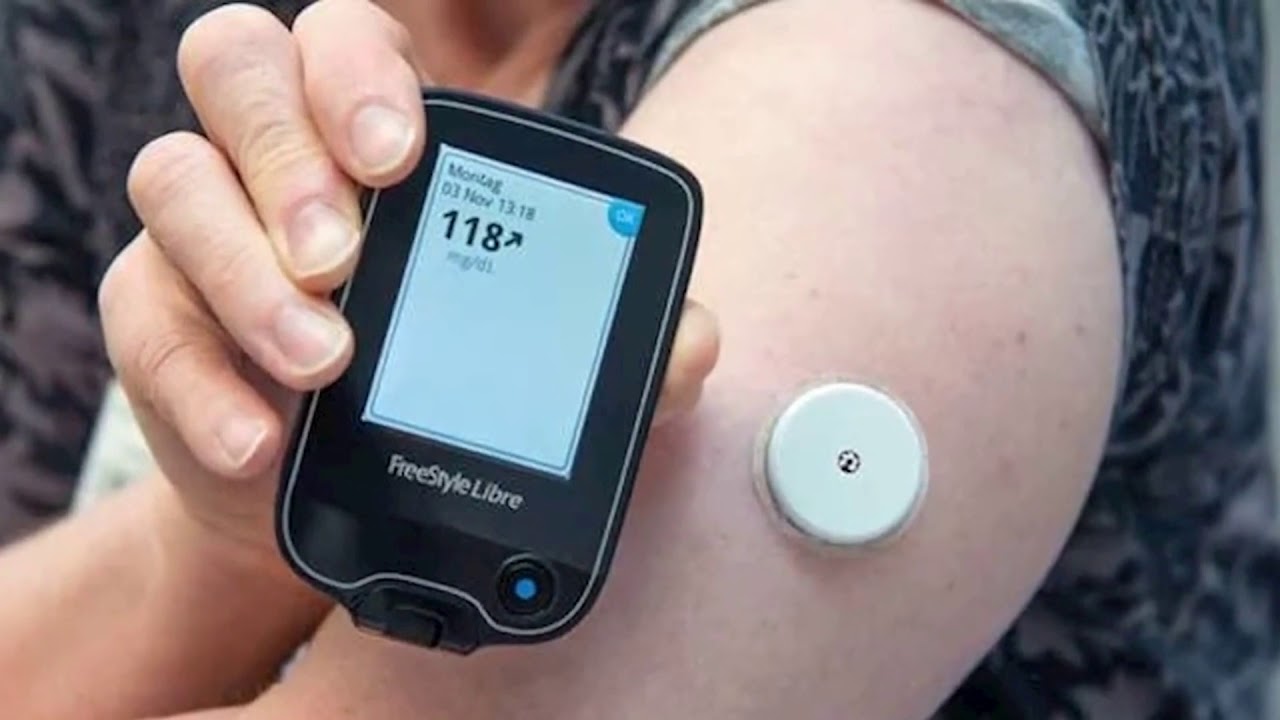 Sugar, like any other carbohydrate, is not absorbed by the body directly: it is broken down in the intestines to simple sugars (monosaccharides) and enters the blood in the form of glucose.
Sugar, like any other carbohydrate, is not absorbed by the body directly: it is broken down in the intestines to simple sugars (monosaccharides) and enters the blood in the form of glucose.
A healthy 70 kg person has approximately 1 teaspoon (4 grams) of glucose in their blood at all times.
This substance is the main source of energy for all body cells. It is thanks to him that we have the strength to breathe, move, learn and think.
How blood sugar is measured and what is considered normal
In international practice, blood sugar (glycemia) is measured in the so-called molar concentration – millimoles per liter (mmol/l). In the United States, Germany, and some other countries, mass concentrations are also common, in milligrams per deciliter (mg/dL). To convert one concentration to another, it is enough to remember this equality: 1 mmol / l \u003d 18 mg / dl.
A blood sugar test is done on an empty stomach, usually in the morning. This is important because any food you eat can raise your glucose levels.
Sample can be taken from a finger or a vein. Venous blood tests give a more accurate result.
Fasting blood glucose from a vein is between 3.9 and 5.6 mmol/L (70-100 mg/dL).
If the test result is different from the norm, this means the following:
- From 5.6 to 6.9 mmol / l – the so-called prediabetes. This is a slight increase in blood sugar levels, which means that something is going on in your body that increases the risk of developing diabetes.
- 7 mmol/l and above – hyperglycemia (increased blood glucose level). Most often, the violation speaks of diabetes mellitus.
- Below 3.9 mmol/l, hypoglycemia (low blood glucose). This is also an unhealthy condition that can be a sign of a number of disorders in the body.
Please note: when testing blood from a finger, the normal values shift – up to the range of 3.3-5.5 mmol / l.
Why blood sugar changes
The body regulates the amount of glucose in the blood by:
- enzymes that help break down carbohydrates in the intestines and thus affect the rate at which glucose enters the bloodstream;
- hormones that determine how quickly the cells of the body will consume sugar from the blood.

Essential enzymes are produced by the pancreas. It also produces insulin, a key hormone that allows cells to absorb glucose. If there is too little insulin, or, for example, cells stop responding to it for some reason (this is called insulin resistance), blood sugar levels rise. In the first situation, they speak of type 1 diabetes, in the second, of type 2 diabetes.
Glycemia is also affected by the work of:
- the liver and kidneys, which purify the blood from excess glucose and remove the substance from the body;
- thyroid gland: hormones secreted by it determine the rate at which cells consume sugar from the blood;
- adrenal glands. This paired endocrine gland also produces hormones (such as adrenaline) that regulate metabolic rate.
What is the danger of abnormal sugar levels
Both hypo- and hyperglycemia affect well-being. First of all, the brain suffers, since its cells consume about half (up to 60% – if we are talking about a hungry or inactive person) of all the energy supplied by glucose.
Dizziness, loss of concentration, weakness, blurred vision, trembling hands are common symptoms for both low and high blood sugar levels. But abnormal glycemia, in addition to feeling unwell, has other, more serious consequences.
With constant hyperglycemia, glucose accumulates in organs and tissues and becomes toxic – it begins to destroy the liver, kidneys, retina, blood vessels, heart, and nervous system. With a lack of sugar, the cells of the body are chronically lacking nutrition, and this also leads to damage to vital organs.
Why blood sugar levels are high
Most often this indicates a pre-diabetic state or diabetes mellitus that has already occurred. However, other medical problems can also lead to an increase in glycemia.
- Hyperthyroidism. This is a condition in which the thyroid gland produces too many hormones.
- Pancreatitis is an inflammation of the pancreas.
- Severe stress.
- Trauma or surgery.
- Liver diseases.

- Stroke.
- Pancreatic cancer, as well as other rarer tumors.
Why blood sugar levels are low
Hypoglycemia is also a common companion of diabetes. It occurs when a person suffering from this disease takes too much insulin by mistake. But other reasons for low blood glucose levels are also possible.
- Insufficient nutrition. The amount of sugar in your blood drops if you are on a too rigid diet or suffer from an eating disorder such as anorexia or bulimia.
- Too strenuous and long exercise. Let’s say you just ran a marathon, rode a few tens of kilometers on a bike, or just dug a garden, forgetting about lunch.
- Hypothyroidism. This is a condition in which the thyroid gland produces too little hormone.
- Diseases of the adrenal glands, pituitary gland, liver or kidneys.
How to know if your blood sugar level is abnormal
It is almost impossible to do this without a blood test. The fact is that the characteristic symptoms of a decrease or increase in glucose levels can be easily confused with ordinary fatigue or, for example, a reaction to weather changes.
In order not to miss the developing hypo- or hyperglycemia and the diseases that caused it, doctors – both Western and Russian – recommend regularly testing blood sugar levels.
Donate blood for sugar at least once every three years. This is especially important for people over 45.
In addition, it is recommended to do the analysis as soon as possible if you have signs of diabetes:
- urination becomes more frequent;
- you have put on a lot of weight;
- your eyesight is getting worse;
- weakness regularly rolls up, up to darkening in the eyes.
What to do if your blood sugar is low or high
This situation should definitely be discussed with the therapist. The doctor will determine the causes of hypo- or hyperglycemia, make an accurate diagnosis and give instructions on how to return the glucose level to normal.
Depending on the diagnosis, the physician may prescribe medication. Some of them may have to take a lifetime.
Some of them may have to take a lifetime.
Read also 💊💉🍰
- What is anemia, what it is and how to get rid of it
- 6 useful applications for diabetics
- How to lower cholesterol: 9 simple rules
- Why hands shake and what to do about it
- What is your normal heart rate and what to do if yours doesn’t match it
How to keep your blood sugar normal
An increase in blood sugar negatively affects the health of any person, especially when it comes to diabetics. In addition to the well-known “pests” – sweets, chocolate, cookies and sweets – a number of factors can affect the growth of glucose and cause serious harm to the body.
Author
Elena Levina
An increase in blood sugar negatively affects the health of any person, especially when it comes to diabetics. In addition to the well-known “pests” – sweets, chocolate, cookies and sweets – a number of factors can affect the growth of glucose and cause serious harm to the body. Even in perfectly healthy people, excessive consumption of sweets can, over time, cause the body to lose its natural ability to balance blood sugar.
Even in perfectly healthy people, excessive consumption of sweets can, over time, cause the body to lose its natural ability to balance blood sugar.
Let’s talk about things that will easily raise your blood sugar
Sugar-free foods
Strange as it may sound, sugar-free foods can cause sugar to rise. Most of these products contain carbohydrates, fats and starches. It has long been known that carbohydrates are the component that seriously affects the undesirable increase in glucose. So it is not surprising that such products bring significant harm to our organs.
Chinese food
Chinese food, very trendy these days, can also have a significant impact on blood sugar balance. It is oversaturated with fats, which are able to maintain a high level of sugar for quite a long time, which is very dangerous for the body. Among other things, Chinese food, especially fast food, contains a large amount of carbohydrates. The combination is deadly for our body! Other fast food products – pizza, french fries, hamburgers – are no less dangerous for our health.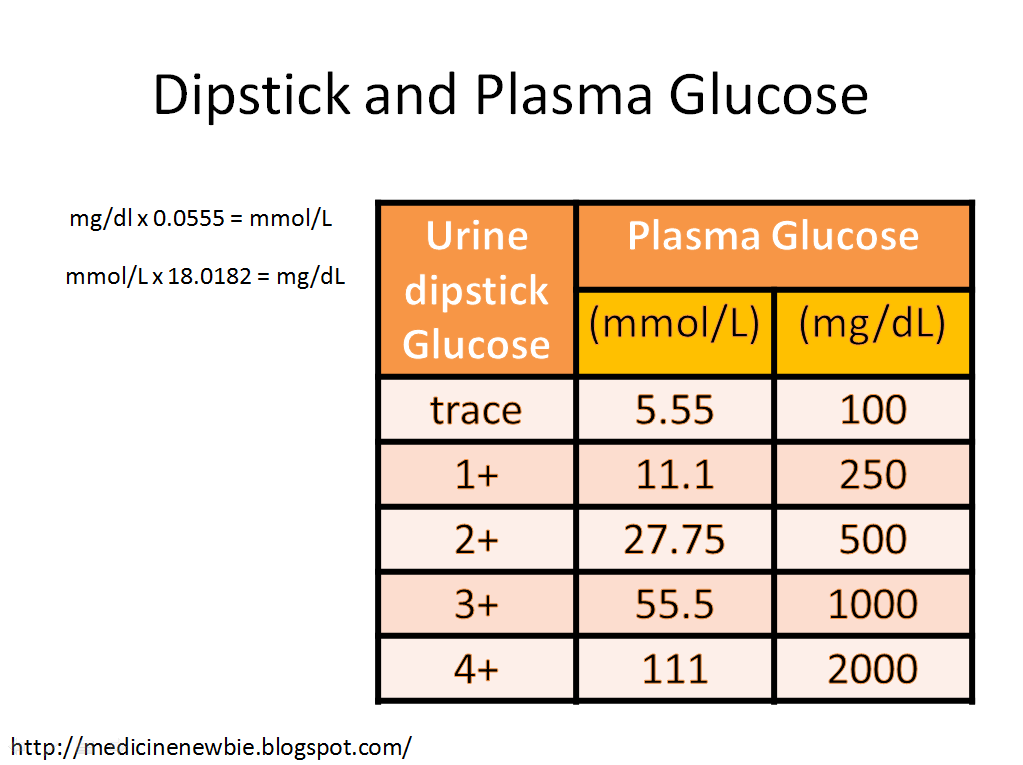
Energy drinks
When you exercise hard, they allow our body to recover faster by replenishing the lack of fluids. But it is important to know one essential fact. The basis of such drinks is sugar, which is necessary during intensive training, but if you are not a professional athlete and do not spend a lot of energy, there is no reason to drink energy drinks instead of water.
Dried fruits
Dried fruits are really very useful, but not for diabetics. They contain an incomparably large amount of sugar in relation to their size and quantity. Just a few fruits are enough for the sugar level to jump sharply.
There are a few tricks to help you balance your sugar.
First of all – moderate physical activity
This does not mean that exhausting daily workouts should be your goal. It is enough to slightly increase your daily activities: do house cleaning, laundry or gardening. Even quite moderate exercise can significantly lower blood sugar levels and make life easier for a diabetic.
Yoghurt
All yogurts contain probiotics, microorganisms that support the immune system and aid digestion. Ultimately, their constant use leads to a decrease in sugar in the body. But, of course, you need to beware of sweet yoghurts with fillers.
Vegetarian
Studies show that people who cut out animal meat, including milk and eggs, have much better blood sugar balance and require less insulin. One theory is that it may be because plant foods are high in fiber, which slows down the breakdown of carbohydrates, thereby causing slow and controlled absorption of sugar into the bloodstream.
Cinnamon
It has long been known from grandmother’s recipes that cinnamon is an excellent folk remedy for diabetes. Today, scientific research confirms this. Cinnamon contains naturally occurring chemicals that help maintain proper blood sugar levels.
A few more important points
– Birth control pills can have a big effect on blood sugar levels.

 This process forms toxic acids known as ketones. If you have ketones (measured in blood or urine) and high blood sugar, the condition is called diabetic ketoacidosis. If it’s not treated, it can lead to a diabetic coma.
This process forms toxic acids known as ketones. If you have ketones (measured in blood or urine) and high blood sugar, the condition is called diabetic ketoacidosis. If it’s not treated, it can lead to a diabetic coma. Low blood sugar can be caused by too much insulin or not enough food. Exercising too vigorously or drinking too much alcohol can have the same effect.
Low blood sugar can be caused by too much insulin or not enough food. Exercising too vigorously or drinking too much alcohol can have the same effect.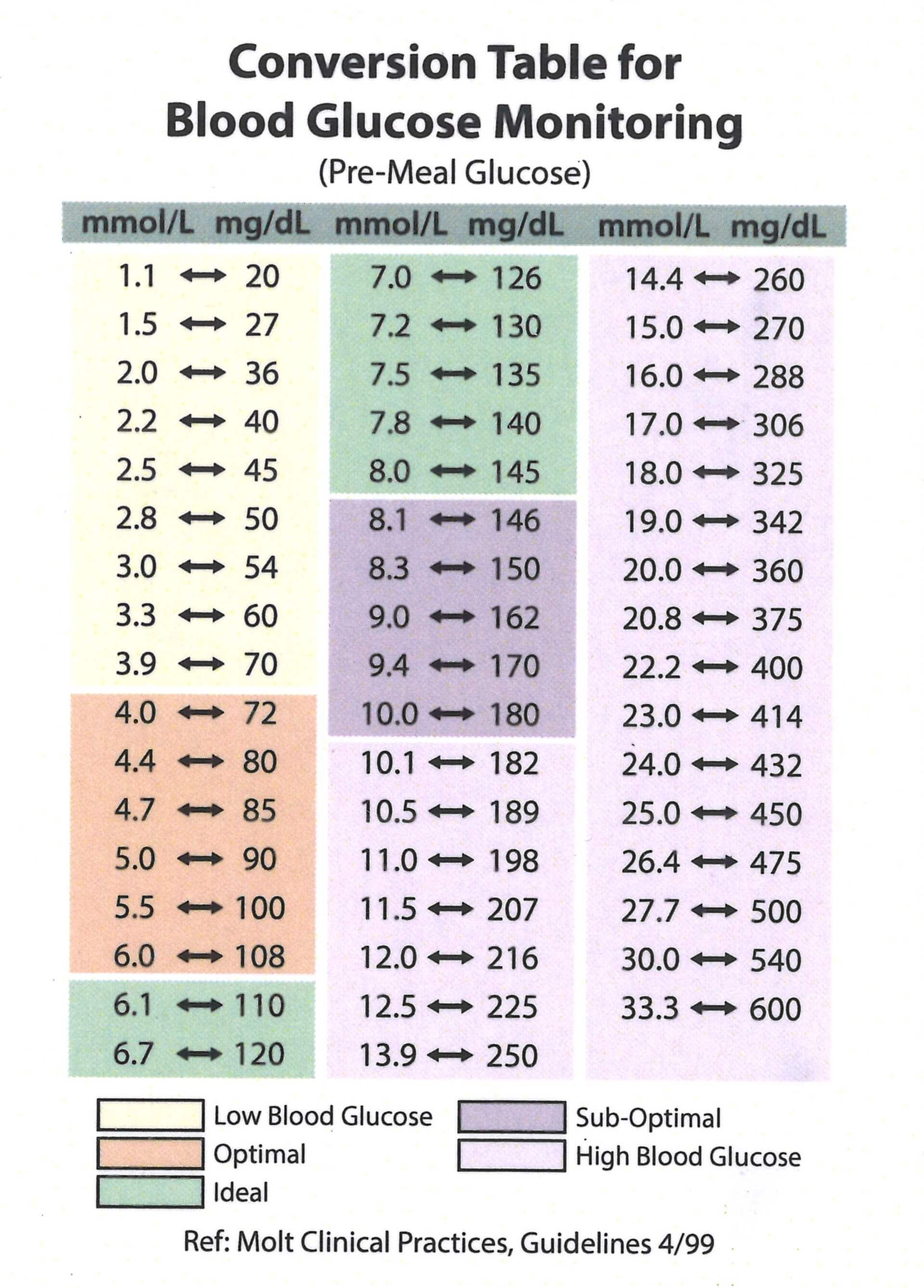
 Consistent snacks and meals can help you control your blood sugar level.
Consistent snacks and meals can help you control your blood sugar level.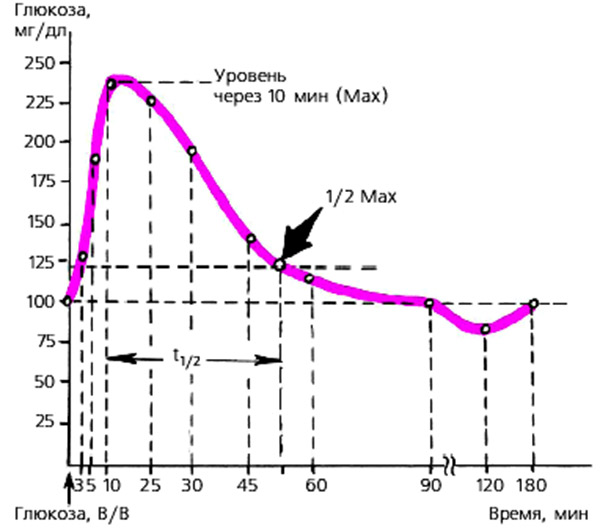

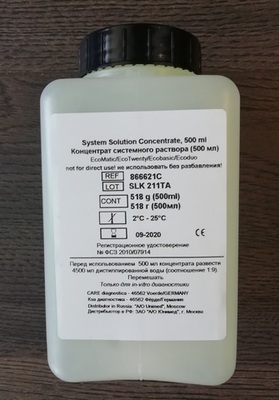
 This process forms toxic acids known as ketones. If you have ketones (measured in blood or urine) and high blood sugar, the condition is called diabetic ketoacidosis. If it’s not treated, it can lead to a diabetic coma.
This process forms toxic acids known as ketones. If you have ketones (measured in blood or urine) and high blood sugar, the condition is called diabetic ketoacidosis. If it’s not treated, it can lead to a diabetic coma.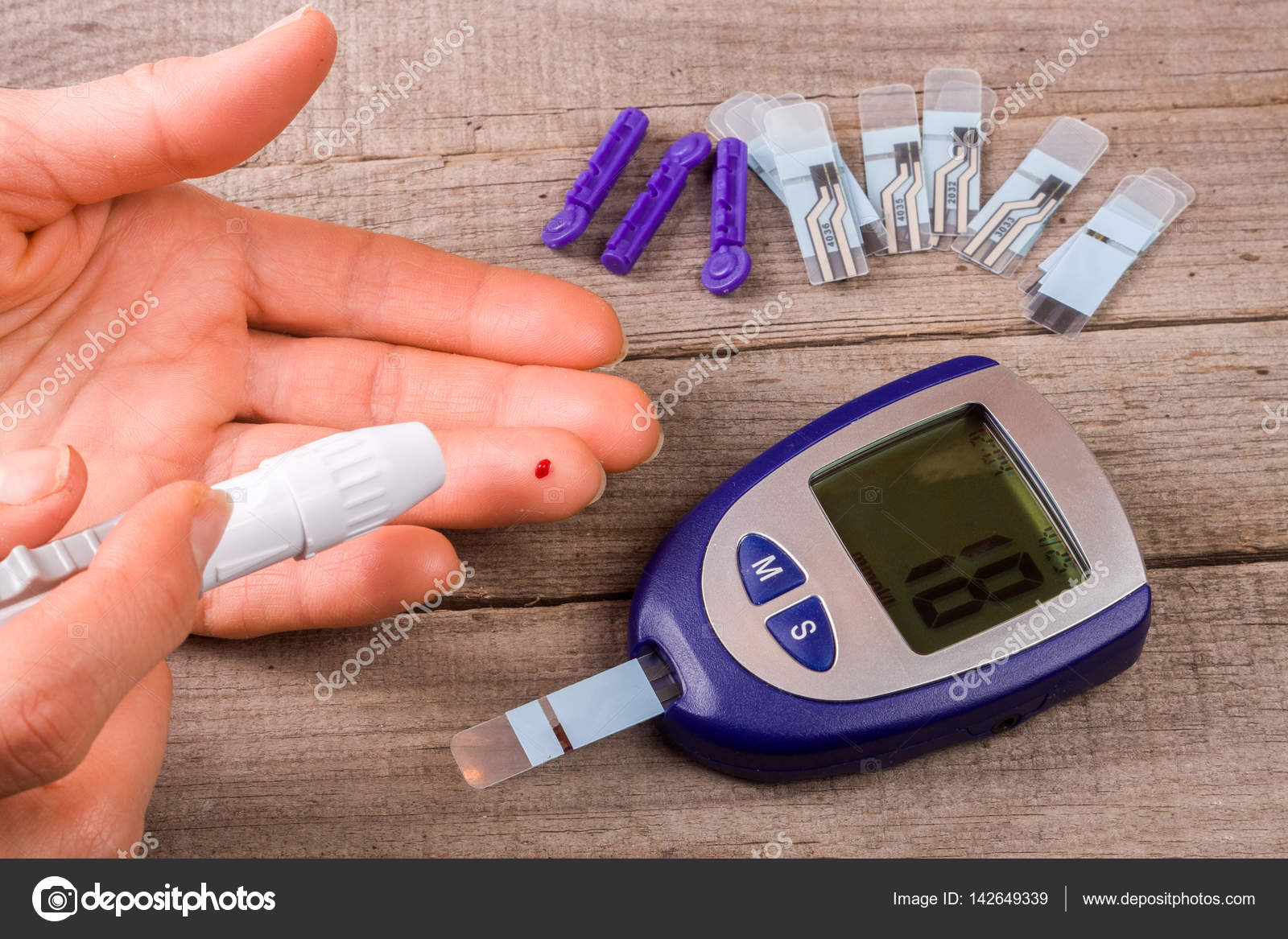 Low blood sugar can be caused by too much insulin or not enough food. Exercising too vigorously or drinking too much alcohol can have the same effect.
Low blood sugar can be caused by too much insulin or not enough food. Exercising too vigorously or drinking too much alcohol can have the same effect.
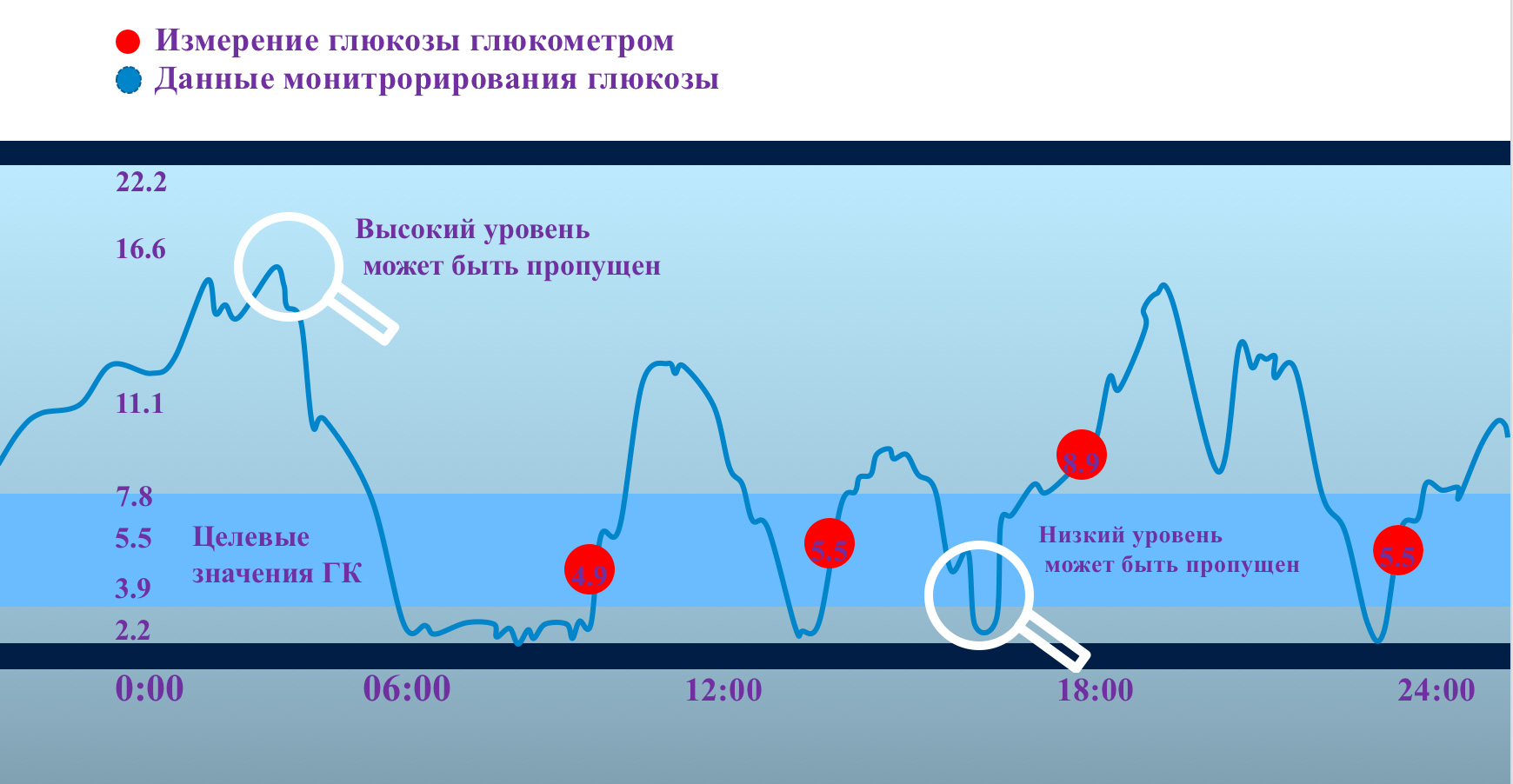 Consistent snacks and meals can help you control your blood sugar level.
Consistent snacks and meals can help you control your blood sugar level.



